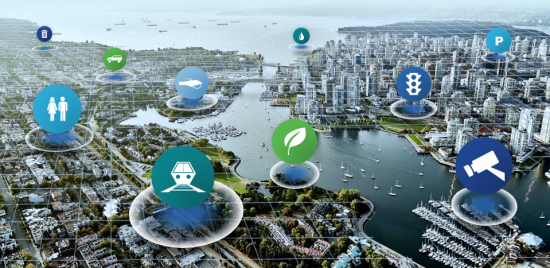There has been lots of discussion on why cities are looking to embrace digital solutions to make them smarter. As smart city technologies and their related business models mature, cities are increasingly looking to deploy and scale multiple solutions across the city. This creates a really interesting opportunity for telecommunications service providers (SPs) based on their relationships and existing footprints by way of their fiber, wireless and wired network investments. They also have a legacy of providing both consumer- and enterprise-related network services with proven reliability and can extend this skill set to include a broader range of smart services. Let’s look at some recent examples of where this is happening:
In Copenhagen, an early adopter of smart technologies and a city intent on eliminating its carbon footprint by 2025, TDC and Cisco have joined forces to provide the networking infrastructure, platform and solutions framework to deploy an array of smart city solutions (see more details). TDC, Denmark’s largest SP, helped initialize these efforts by providing access to key city decision makers and local business and community leaders and will be delivering the ongoing connectivity and support for these solutions.

Similarly, in Kansas City, Missouri, in the US, Sprint and Cisco have partnered to enable and deploy a diverse and powerful portfolio of interconnected smart city solutions (more details here). Interconnectivity is really the power of smart city initiatives—not just in making a single system or city industry more efficient, but in generating and securely sharing data from each set of systems and domains across many city agencies, communities and businesses to provide new insights for decision making. And because SPs are the local hubs for connectivity—their role is especially critical in galvanizing and maintaining interconnectedness. As we outlined in an earlier blog post, it takes an interconnected ecosystem of partners to make the smart city vision a reality.
Cisco brings 30 years of networking expertise to bear on the challenges of deploying and supporting smart city solutions with its Smart+Connected Digital Platform. When it comes to strong integration, the Connected Digital Platform offers an application-enabled data aggregation layer that delivers services to cities, citizens and businesses (watch video). It securely connects systems and enables cities to turn gathered data into action across various agencies and sectors to optimize city services, enhance citizen engagement and improve the day-to-day quality of life. It allows service providers with cross-domain expertise to manage systems and extend decision support horizontally to their customers.
One of our newest SP-aided deployments is in the city of Bucharest with Deutsche Telekom (DT), where a set of smart solutions will be integrated over the Connected Digital Platform. Speaking about the project, Daniel Baluta, Mayor of District 4 in Bucharest was enthusiastic: “We are delighted to be partnering with DT and Cisco on the Tineretului Park smart city project. Residents of District 4 will be the first to enjoy free Wi-Fi, and video monitoring will aid people in distress and help stop vandalism. We will have a smart parking mobile application, and the smart lighting solution will decrease our energy costs.” The mayor sees the partnership as a way for Bucharest to reach a higher level of development and be a model of other cities.

George Nistor, Senior ICT Sales and Business Development for Deutsche Telekom AG, concurs with Mayor Baluta. “The pilot will make coming to the park more enjoyable and safer and it also brings benefits to the city by improving its ability to manage public spaces, lighting, and safety more effectively at lower costs.” George added, “We are proud of our implementation of the first integrated smart city concept in District 4 Bucharest, for the great collaboration with City Hall and for the strong 10-year relationship with Cisco.” George noted that out that these cutting-edge technologies—including analytics, artificial intelligence and other key applications—will support Bucharest on its digitalization journey and they also fortify DT’s strong position as an integrated ITC provider.
As we enter a new phase of smart city maturity in terms of city readiness, technology advancement and ecosystem cohesion, it is an exciting time for SPs to realize new opportunities to build on their unique role in cities and broaden their service offerings.
“Service providers can generate new revenue streams while helping cities achieve operational efficiency,” observed Peter Karlstromer, Cisco Senior Vice President for Service Provider activities in Europe, the Middle East, Africa and Russia (EMEAR). He noted that Cisco’s network experience, partnerships and platform technology can enable SPs to be ready to address this very large opportunity. “We’ve had great success with TDC, Sprint and DT, and we look forward to partnering with SPs in other markets to help scale smart city adoption worldwide.”
I agree with Peter. I’m confident that our SP relationships will continue to be an important part of our partner ecosystem and will be instrumental in extending the number and range of smart city deployments in more cities and communities across the globe.
CONNECT WITH US